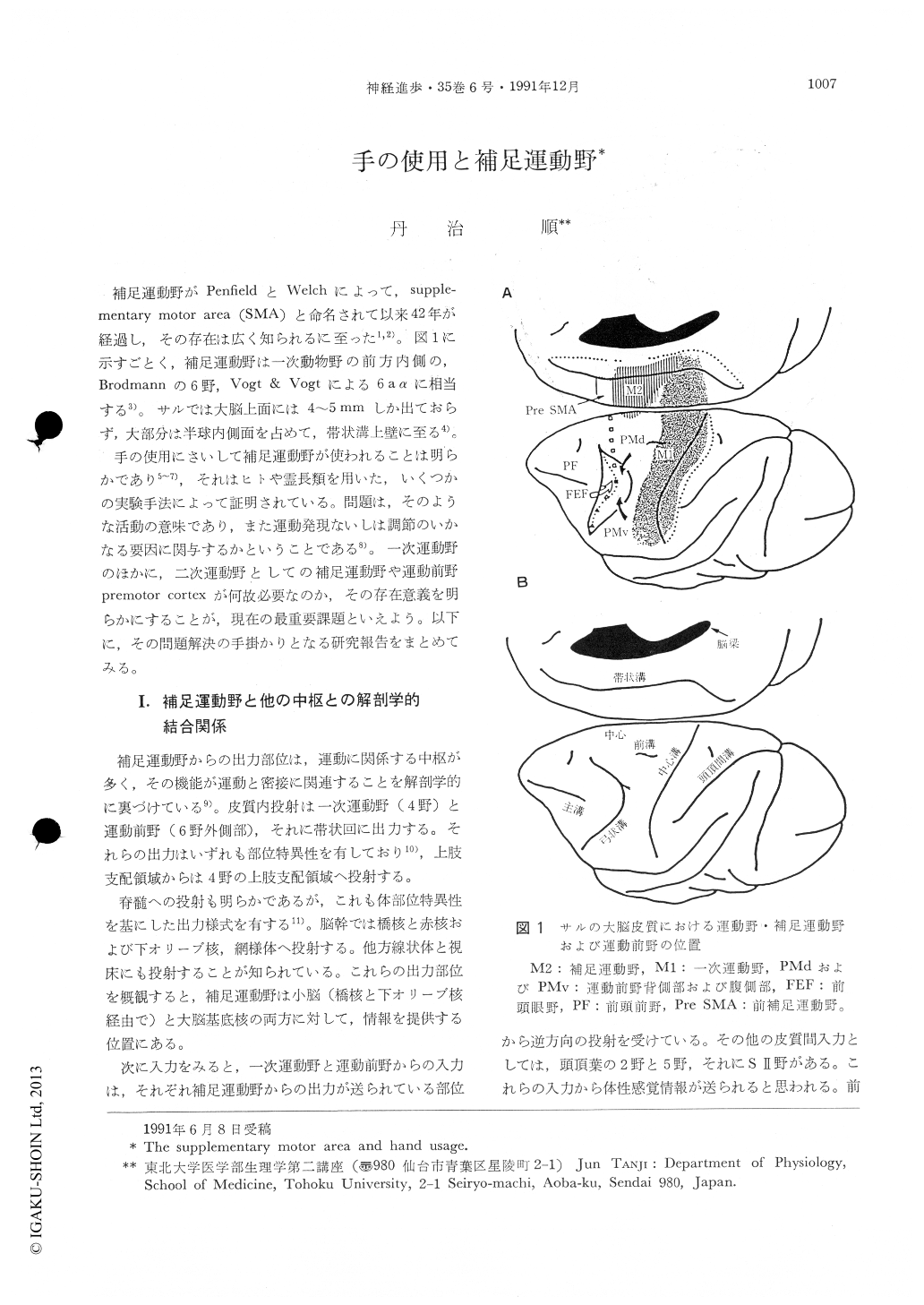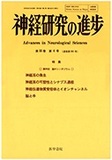Japanese
English
- 有料閲覧
- Abstract 文献概要
- 1ページ目 Look Inside
補足運動野がPenfieldとWelchによって,supplementary motor area(SMA)と命名されて以来42年が経過し,その存在は広く知られるに至った1,2)。図1に示すごとく,補足運動野は一次動物野の前方内側の,Brodmannの6野,Vogt & Vogtによる6aαに相当する3)。サルでは大脳上面には4~5mmしか出ておらず,大部分は半球内側面を占めて,帯状溝上壁に至る4)。
手の使用にさいして補足運動野が使われることは明らかであり5~7),それはヒトや霊長類を用いた,いくつかの実験手法によって証明されている。問題は,そのような活動の意味であり,また運動発現ないしは調節のいかなる要因に関与するかということである8)。一次運動野のほかに,二次運動野としての補足運動野や運動前野Premotor cortexが何故必要なのか,その存在意義を明らかにすることが,現在の最重要課題といえよう。以下に,その問題解決の手掛かりとなる研究報告をまとめてみる。
After 42 years of its discovery, functional significance of the supplementary motor area (SMA) begins to be understood. When the hand is used in various ways, the SMA is active. It is now established that the SMA is active in both simple and complex hand movements. With simple movements, however, both the frequency of occurrence of active cells and magnitudes of activity changes are less than those of primary motor cortex (MI) cells. Although similarities exist, connectivities of afferents and efferents of the SMA and MI are different. Therefore, these two areas must be used in different ways. After a brief review of recent lesion experiments of the SMA, this article describes results of recent studies on neuronal activity of the SMA. In relation to selective usage of two hands in a learned motor task, the activity of SMA, neurons were very different from that of MI neurons. The SMA activity seems not much to be related to selection of active muscles than to be related to what action is to be made. A subsequent study revealed that the SMA and the premotor cortex (PM) are differently involved in performance of sequential movements. SMA neurons were more active in relation to a sequential button-press movement, when the sequence was memorized. PM neurons were more active when the sequence was visually guided.

Copyright © 1991, Igaku-Shoin Ltd. All rights reserved.


